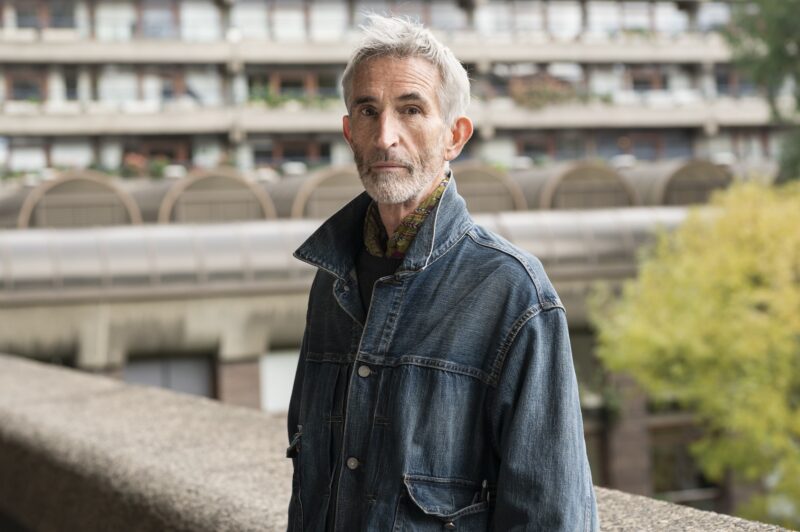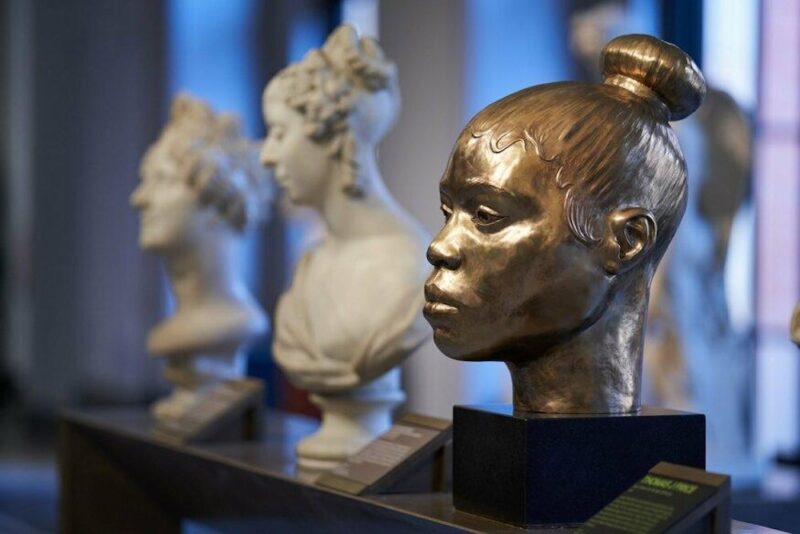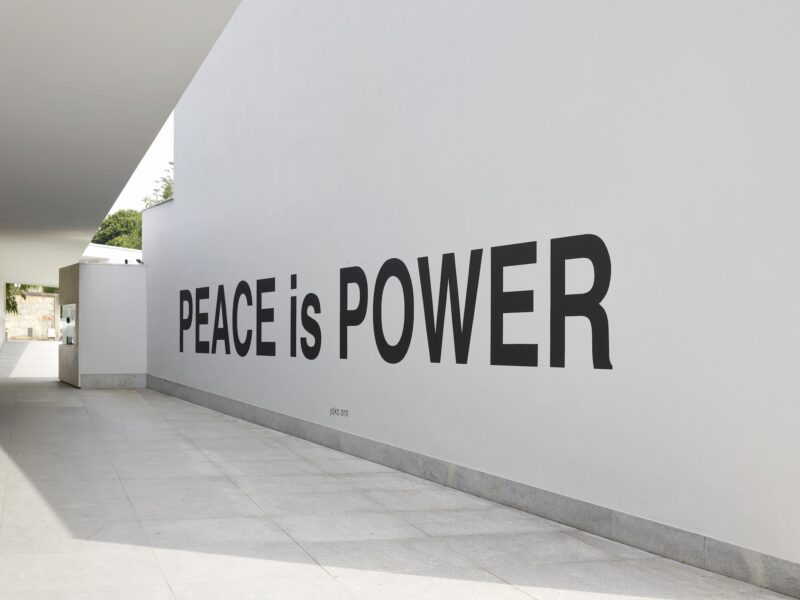“Incredibly, this will be Barrada’s first large scale work shown in a public institution in London. As an artist at the cutting edge of contemporary art with a hugely eclectic, experimental practice, I am thrilled that Barrada has accepted this commission for the Curve. Focusing on the aftermath of the earthquake in Agadir in 1960, the commission is particularly relevant to the Barbican’s history and foregrounds important contemporary debates around the rebuilding of society. I have no doubt that the installation, the 29th in the Curve programme, will be a highlight of the 2018 art calendar.”
Jane Alison, Head of Visual Arts, Barbican.
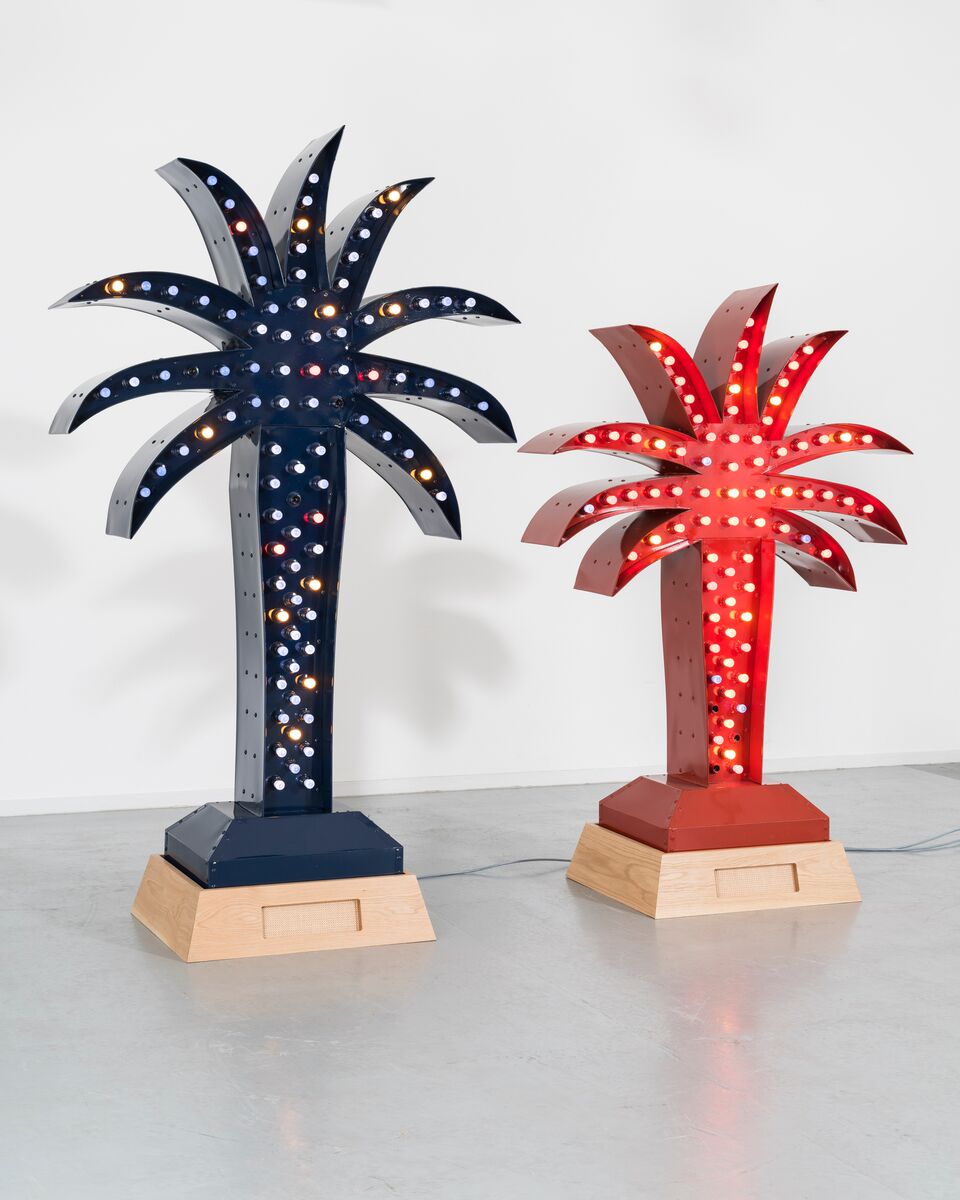
Blue Palm and Red Palm, 2016 © Yto Barrada, courtesy Pace Gallery; Sfeir-Semler
Gallery, Hamburg, Beirut; and Galerie Polaris, Paris Photograph by Damian Griffiths
Opening 7 February 2018, Barbican Art Gallery presents artist Yto Barrada’s first solo exhibition in a public gallery in London. For this new commission, Barrada transforms the sweeping form of the Curve with a dramatic site-specific installation – including a mural, a new film commission, several sculptures, and a series of live and recorded performances – to consider how a city and its people might address the process of reinvention following disaster. She takes as her starting point the hybrid novel-play by Moroccan writer Mohammed Khaïr-Eddine – Agadir (1967) – which reflects on the devastating earthquake that destroyed much of the modernist city of Agadir, Morocco, in 1960.
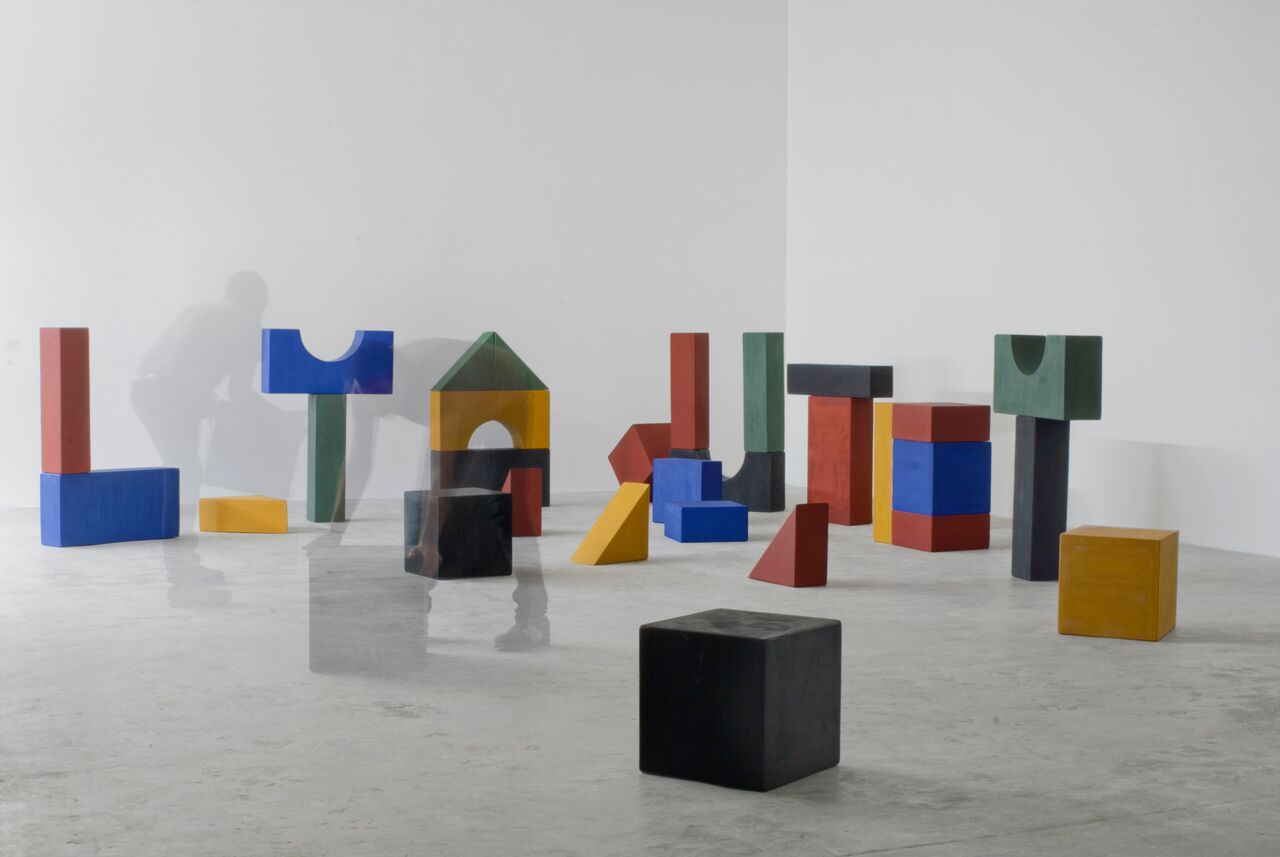
Lyautey Unit Blocks (Play), 2010 The Metropolitan Museum of Art, New York. Gift of The Pierre and Tana Matisse Foundation, 2011 © Yto Barrada. Image copyright The Metropolitan Museum of Art/Art Resource/Scala, Florence, 2017.
Weaving together personal narratives and political ideals, Barrada presents a complex portrait of a city in transition, resonating with many of the challenges we face in contemporary society. Over the past two decades, Barrada’s multimedia practice has explored questions ranging from migration to abstraction, from fossils to botany. She examines the strategies of resistance employed every day in her native Morocco and traces the ‘hidden transcripts’ of objects and people in her work, guiding us through the overlapping realities and fictions of these narratives.
At the Barbican, Khaïr-Eddine’s text provides the stimulus for Barrada’s commission. Agadir was written following a mission instigated by the government of King Mohammed V to assess the devastation and reformation of the city. It involves a king, a psychic, a cook, a trade unionist, a parrot, a female warrior and others engaging in a fervent debate over how best to reform the structures governing their lives. Translated into English for the first time, the voices of these characters are manifested in a sound installation in the Curve, where the earthquake comes to represent the rising tensions of society facing the ruins of urban environment, political and religious power and social relationships.
A vast monochrome mural stretches along the length of the gallery’s outer wall, curved like the city’s bay. Barrada sketches the architecture of Agadir beginning before the earthquake and continuing with the iconic buildings constructed following the disaster. Agadir was rebuilt by several architects and urbanists, whose use of bare concrete and rigorously structured forms, heavily influenced by the Brutalist style pioneered by French architect Le Corbusier, resonates with the Brutalist expression of the Barbican’s buildings. Echoing the Barbican’s own history as a site of post-war destruction rebuilt with utopian ideals, Agadir’s reconstruction followed Morocco’s newly gained independence from colonial rule.
Furniture-like sculptural interventions interject the visitor’s journey through the space, created using traditional Moroccan wicker weaving techniques. Drawing on the history of the ‘conversation chair’ and the psychoanalyst’s divan, their configurations manifest different typologies of sitting – from squatting to lounging – evoking the potential of sitting as a practice of waiting, protest or rehabilitation.
Yto Barrada said;
“The Barbican Curve is as scary as a haunted house: some pretty great ghosts have already installed wonderful projects using the space in every possible way. And now for my sins, it’s my turn. I’m honoured to have a chance to try. In my performance and installation piece, I will explore relationships between spatial proximity, affect and trauma. The segmented architecture of Agadirembodies a visual repertoire for all dreamers of a New Town or even of a New World.”
Yto Barrada: Agadir The Curve, Barbican Centre 7 February – 20 May 2018 #YtoBarrada www.barbican.org.uk/join-support/support-us/barbican-centre-trust
About The Artist
Documenting the visual languages of the everyday to expose overarching structures of
authority, Barrada’s projects interrogate ideas around bureaucracy, archaeology, authenticity and myth-making. Early works included A Life Full of Holes: The Strait Project (1998-2004), exploring
everyday life in and around the post-colonial city Tangier, evoking through their absence the perilous migratory routes crossing the Strait of Gibraltar. More recent work has investigated the evolution of
urban space and the narratives shaping natural history and geology. The fossil industry is the subject
of the 2015 film False Start, which visits the lunar Moroccan fossil landscape and the entrepreneurial
preparators who supplement the region’s export of archaeological finds with forged and wholly invented artefacts. Unruly Objects (Suite for Thérèse Rivière) (2016) takes the interned figure of ethnologist Thérèse Rivière as its starting point; her collections of toys, notebooks and drawings from
Algeria’s colonial era provide fertile ground for Barrada’s fictional response to her fieldwork.
Yto Barrada (Moroccan; b. 1971, Paris) lives and works in New York. She is the founder
of Cinémathèque de Tanger (2006-ongoing), North Africa’s premiere cinema cultural centre and film
archive, in a renovated 1930s cinema theatre in Tangier. She was nominated for the Prix Marcel
Duchamp in 2016, won the Abraaj Group Art Prize in 2015 and was named Deutsche Bank Artist of
the Year in 2011. Barrada’s most recent project was the major commission Tree Identification for
Beginners for Performa 17 in New York. Her work has been exhibited at Tate Modern (London),
MoMA (New York), The Renaissance Society (Chicago), Witte de With (Rotterdam), Haus der Kunst
(Munich), Centre Pompidou (Paris), Whitechapel Gallery (London), and the 2007 and 2011 Venice
Biennales.


